|
Books Should Be Free Loyal Books Free Public Domain Audiobooks & eBook Downloads |
|
|
Books Should Be Free Loyal Books Free Public Domain Audiobooks & eBook Downloads |
|
Science |
|---|
|
Book type:
Sort by:
View by:
|
By: John Locke (1632-1704) | |
|---|---|
 Second Treatise of Government
Second Treatise of Government
| |
By: John Lubbock (1834-1913) | |
|---|---|
 The Beauties of Nature and the Wonders of the World We Live In
The Beauties of Nature and the Wonders of the World We Live In
| |
By: John Lyde Wilson (1784-1849) | |
|---|---|
 The Code of Honor, Or, Rules for the Government of Principals and Seconds in Duelling
The Code of Honor, Or, Rules for the Government of Principals and Seconds in Duelling
| |
By: John M. Corbett | |
|---|---|
 Aztec Ruins National Monument, New Mexico
Aztec Ruins National Monument, New Mexico
This U.S. National Park Service historical handbook from 1962 introduces the reader to the history, geography, and archaeology of the Aztec Ruins and surrounding area. It explores what has been learned about the early people who settled there and discusses what the ruins were like at the time of publication. - Summary by Verla Viera | |
By: John M. Douglass | |
|---|---|
 Indians in Wisconsin's History
Indians in Wisconsin's History
Pre-European arrival history of Wisconsin's Native American tribes, with discussions of their way of life, crafts, clothing, shelter, hunting, fishing and farming. Their activity and battles during French, British and U.S. rule of the territory. Extermination and forced removal of tribes to agencies and reservations. Numbers of survivors from original tribes and plight of those remaining in the 20th century. Popular Science Handbook No. 6, published by the Milwaukee Public Museum in 1954. Summary by Verla Viera | |
By: John Merle Coulter (1851-1928) | |
|---|---|
 North American Species of Cactus
North American Species of Cactus
| |
By: John Moody (1868-1958) | |
|---|---|
 The Railroad Builders; a chronicle of the welding of the states
The Railroad Builders; a chronicle of the welding of the states
| |
By: John Muir (1838-1914) | |
|---|---|
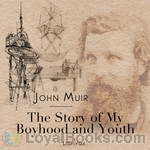 The Story of My Boyhood and Youth
The Story of My Boyhood and Youth
“The only fire for the whole house was the kitchen stove, with a fire box about eighteen inches long and eight inches wide and deep,- scant space for three or four small sticks, around which in hard zero weather all the family of ten shivered, and beneath which in the morning we found our socks and coarse, soggy boots frozen solid.” Thus, with perceptive eye for detail, the American naturalist, John Muir, describes life on a pioneer Wisconsin farm in the 1850’s. Muir was only eleven years old when his father uprooted the family from a relatively comfortable life in Dunbar, Scotland, to settle in the backwoods of North America... | |
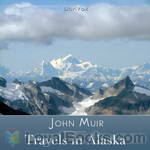 Travels in Alaska
Travels in Alaska
In 1879 John Muir went to Alaska for the first time. Its stupendous living glaciers aroused his unbounded interest, for they enabled him to verify his theories of glacial action. Again and again he returned to this continental laboratory of landscapes. The greatest of the tide-water glaciers appropriately commemorates his name. Upon this book of Alaska travels, all but finished before his unforeseen departure, John Muir expended the last months of his life. | |
By: John Munro (1849-1930) | |
|---|---|
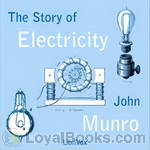 The Story of Electricity
The Story of Electricity
In the book's preface, the author writes: "Let anyone stop to consider how he individually would be affected if all electrical service were suddenly to cease, and he cannot fail to appreciate the claims of electricity to attentive study."In these days when we take for granted all kinds of technology - communications, entertainment, medical, military, industrial and domestic - it is interesting to learn what progress had been made in the fields of electricity and technology by the beginning of the 20th century... | |
By: John Murray (1841-1914) | |
|---|---|
 Ocean: A General Account Of The Science Of The Sea
Ocean: A General Account Of The Science Of The Sea
Sir John Murray, considered to be the father of modern oceanography, discusses the variations in the depths of oceans, and the methods and instruments used to measure such depths. He discusses many properties of oceanic waters including salinity, compressibility, pressure, colour, viscosity, and the presence of dissolved gases. The author addresses changes in density of water and its impact on the motion of water while describing ocean currents. He gives details of a variety of marine organisms based on the ocean depths at which they are found... | |
By: John N. Reynolds | |
|---|---|
 The Twin Hells; a thrilling narrative of life in the Kansas and Missouri penitentiaries
The Twin Hells; a thrilling narrative of life in the Kansas and Missouri penitentiaries
| |
By: John O'Keefe | |
|---|---|
 As Long As You Wish
As Long As You Wish
| |
By: John Phin (1830-1913) | |
|---|---|
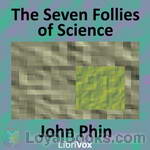 The Seven Follies of Science
The Seven Follies of Science
The seven follies of science; a popular account of the most famous scientific impossibilities and the attempts which have been made to solve them to which is added a small budget of interesting paradoxes, illusions, and marvels. | |
By: John R. (John Robert) Effinger (1869-1933) | |
|---|---|
 Women of the Romance Countries
Women of the Romance Countries
| |
 Women of the Romance Countries (Illustrated) Woman: In all ages and in all countries Vol. 6 (of 10)
Women of the Romance Countries (Illustrated) Woman: In all ages and in all countries Vol. 6 (of 10)
| |
By: John Stuart Mill (1806-1873) | |
|---|---|
 The Subjection of Women
The Subjection of Women
The Subjection of Women is the title of an essay written by John Stuart Mill in 1869, possibly jointly with his wife Harriet Taylor Mill, stating an argument in favor of equality between the sexes. It offers both detailed argumentation and passionate eloquence in opposition to the social and legal inequalities commonly imposed upon women by a patriarchal culture. Just as in “On Liberty,” Mill defends the emancipation of women on utilitarian grounds, convinced that the moral and intellectual advancement of women would result in greater happiness for everybody. | |
 Auguste Comte and Positivism
Auguste Comte and Positivism
Part 1 lays out the framework for Positivism as originated in France by Auguste Comte in his Cours de Philosophie Positive. Mill examines the tenets of Comte's movement and alerts us to defects. Part 2 concerns all Comte's writings except the Cours de Philosophie Positive. During Comte's later years he gave up reading newspapers and periodicals to keep his mind pure for higher study. He also became enamored of a certain woman who changed his view of life. Comte turned his philosophy into a religion, with morality the supreme guide. Mill finds that Comte learned to despise science and the intellect, instead substituting his frantic need for the regulation of change. | |
By: John Thomson (fl. 1732) | |
|---|---|
 The Tricks of the Town: or, Ways and Means of getting Money
The Tricks of the Town: or, Ways and Means of getting Money
| |
By: John Tyndall (1820-1893) | |
|---|---|
 Fragments of science, V. 1-2
Fragments of science, V. 1-2
| |
 Six Lectures on Light Delivered In The United States In 1872-1873
Six Lectures on Light Delivered In The United States In 1872-1873
| |
 Faraday As A Discoverer
Faraday As A Discoverer
This is the first of two related Faraday projects. It is about Faraday and deals more with biographical references to Faraday, outlining the important junctures in his life. The second, On the Various Forces of Nature, consists of lectures by Faraday covering a non-mathematical survey of the fundamental forces of nature and some relationships among them. Future projects will feature the 19th century scientists upon whose shoulders Einstein stood while developing his Theory of Relativity, including Humboldt, Lorentz, Michelson, Morley, Curie and Eddington. Summary by William A Jones | |
By: John Victor Peterson | |
|---|---|
 Lost in the Future
Lost in the Future
| |
By: John W. Campbell (1910-1971) | |
|---|---|
 The Ultimate Weapon
The Ultimate Weapon
The star Mira was unpredictably variable. Sometimes it was blazing, brilliant and hot. Other times it was oddly dim, cool, shedding little warmth on its many planets. Gresth Gkae, leader of the Mirans, was seeking a better star, one to which his "people" could migrate. That star had to be steady, reliable, with a good planetary system. And in his astronomical searching, he found Sol.With hundreds of ships, each larger than whole Terrestrial spaceports, and traveling faster than the speed of light, the Mirans set out to move in to Solar regions and take over... | |
By: John Wesley Powell (1834-1902) | |
|---|---|
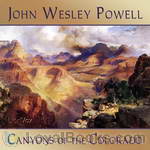 Canyons of the Colorado, or The exploration of the Colorado River and its Canyons
Canyons of the Colorado, or The exploration of the Colorado River and its Canyons
John Wesley Powell was a pioneer American explorer, ethnologist, and geologist in the 19th Century. In 1869 he set out to explore the Colorado and the Grand Canyon. He gathered nine men, four boats and food for ten months and set out from Green River, Wyoming, on May 24. Passing through dangerous rapids, the group passed down the Green River to its confluence with the Colorado River (then also known as the Grand River upriver from the junction), near present-day Moab, Utah. The expedition’s route... | |
By: John Wilkins (1614-1672) | |
|---|---|
 The Discovery of a World in the Moone Or, A Discovrse Tending To Prove That 'Tis Probable There May Be Another Habitable World In That Planet
The Discovery of a World in the Moone Or, A Discovrse Tending To Prove That 'Tis Probable There May Be Another Habitable World In That Planet
| |
By: John Wood Campbell Jr. (1910-1971) | |
|---|---|
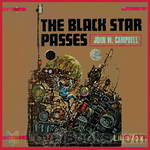 The Black Star Passes
The Black Star Passes
A sky pirate armed with superior weapons of his own invention... First contact with an alien race dangerous enough to threaten the safety of two planets... The arrival of an unseen dark sun whose attendant marauders aimed at the very end of civilization in this Solar System. These were the three challenges that tested the skill and minds of the brilliant team of scientist-astronauts Arcot, Wade, and Morey. Their initial adventures are a classic of science-fiction which first brought the name of their author, John W. Campbell, into prominence as a master of the inventive imagination. | |
By: John Wood Campbell. Jr. (1910-1971) | |
|---|---|
 Islands of Space
Islands of Space
As Earth's faster-than-light spaceship hung in the void between galaxies, Arcot, Wade, Morey and Fuller could see below them, like a vast shining horizon, the mass of stars that formed their own island universe. Morey worked a moment with his slide rule, then said, "We made good time! Twenty-nine light years in ten seconds! Yet you had it on at only half power...." Arcot pushed the control lever all the way to full power. The ship filled with the strain of flowing energy, and sparks snapped in the air of the control room as they raced at an inconceivable speed through the darkness of intergalactic space... | |
 Invaders from the Infinite
Invaders from the Infinite
The famous scientific trio of Arcot, Wade and Morey, challenged by the most ruthless aliens in all the universes, blasted off on an intergalactic search for defenses against the invaders of Earth and all her allies. World after world was visited, secret after secret unleashed, and turned to mighty weapons of intense force--and still the Thessian enemy seemed to grow in power and ferocity. Mighty battles between huge space armadas were but skirmishes in the galactic war, as the invincible aliens savagely advanced and the Earth team hurled bolt after bolt of pure ravening energy--until it appeared that the universe itself might end in one final flare of furious torrential power.... | |